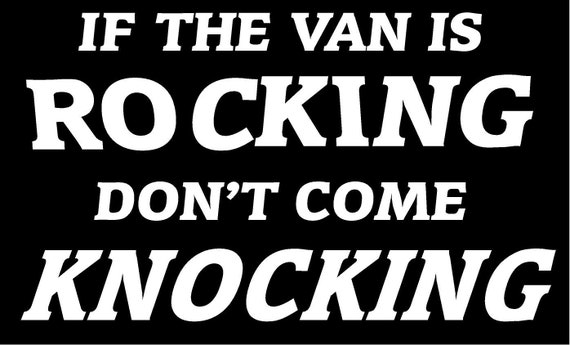










Category: Uncategorized




Some thing from the “Good old days”
Golden State Arms Corporation Pasadena, California
Introduction
Golden State Arms, also known as Pasadena Firearms, was a major military surplus importer, wholesaler, and retailer, located in the Pasadena area 1952-1966. Major to the point they did short term jobs with almost every rifle stock maker, refinisher, gun machine shop, etc in the Western United States, and often nationwide, during their existence. They were the source of work and income for many different companies, most of whom were not owned and operated by the people who owned Golden State Arms.
A fair amount of incorrect information regarding Golden State Arms and the people and companies affiliated with them in various ways, has been circulated for many years and has found it’s way onto many locations on the internet. What led me to research Golden State Arms were M1 carbines. What I learned as a result of the research goes far beyond M1 carbines. This research provided me with a window of opportunity to meet and interview a number of the people affiliated with Golden State Arms, companies they did business with, and companies that were founded by individuals who got their start at Golden State Arms. The high level of interest by owners of small arms manufactured, distributed, and/or sold by Golden State Arms, led to my decision to include their history on this website.
What follows is a historical account based on interviews, newspaper archives, and a variety of different documents from the time period the company existed. History is what history was, and Golden State Arms was a big part of it, in many different ways.
M1 Carbines by Golden State Arms or Santa Fe… not
Larry Ruth, author of War Baby Comes Home, received information from an employee at National Ordnance of South El Monte, CA, that the Santa Fe Division of Golden State Firearms contracted with National Ordnance to manufacture an unknown quantity of M1 carbines with the Santa Fe name.
Alvin Gettler, the founder and owner of Golden State Arms (1952-1960), Leo Grizzaffi, part of management (1958-1966), and Bob Penney, founder and owner of National Ordnance (1958-1962), all indicated the information provided to Larry Ruth was incorrect. Golden State Arms sold National Ordnance carbines in their retail store after 1960, but did not manufacture, or contract for the manufacture, of any M1 carbines with the name of Santa Fe or Golden State Arms. Larry Ruth has been made aware of this information.
Gettler indicated the only M1 carbines he imported were two cases of surplus U.S. GI M1 carbines from Denmark. His information was they had been used on one or more islands Denmark lays claim too in the arctic area. These were sold as GI surplus with no non-GI markings.
In the years after the end of the Korean War, U.S. military surplus became available from many of the countries who had purchased it, and through auctions conducted by the U.S. Army Office of Ordnance and various branches of the U.S. military.
The cost of the surplus, in comparison to the money it could be sold for retail, made the surplus small arms business extremely lucrative. The potential attracted more than a few individuals and companies from around the world. During the 1950’s, a few of these companies emerged as surplus giants.
Golden State Arms: 1952-1960
The Beginning
In the San Gabriel Valley Tribune, December 7, 2001 there appeared an article entitled “Memories still vivid 60 years later – Area Pearl Harbor survivors recall events of Dec. 7, 1941”, by Rodney Tanaka. Half way through the article, was an interview with Al Gettler.
“Monterey Park resident Alvin Gettler, 88, worked as a civilian rigger for the Navy at Pearl Harbor in 1941. He spent Dec. 7 helping the wounded and fighting fires. Gettler heard about the attack while home in Waikiki. He and a co-worker reached the harbor during the second wave of bombings at about 8:50 a.m. “I did anything I was told to do,” he said. “I didn’t leave until 9 p.m.” Gettler left his Navy job in 1943 and served in the Merchant Marines until 1951. He does feel excluded from Pearl Harbor survivors’ events because he was a civilian instead of a serviceman, he said. He and many other civilians went to Pearl Harbor to help when they weren’t required to.”
Gettler served in the Merchant Marine during and after WWII.
In 1952 Alvin Gettler acquired Roland H. Vazquez & Company, a gun store located at 972 E Colorado Blvd, Pasadena, CA. Vasquez and Gettler had previously partnered up to import a shipment of surplus small arms. A dispute and court case resulted in Gettler taking possession of Vazquez’s gun store. Working at the store at the time of the takeover was Robert E. Penney Jr. Gettler wanted to rename the gun store and asked Penney for suggestions. Thus was born Pasadena Firearms.
Gettler’s first import after acquiring Roland H. Vazquez Co. and naming it Pasadena Firearms, was a joint financial venture in 1952 with Bob Penney for 1500 Mexican Mausers from Mexico. In late 1954 Penney left the gun business and a short time later began a career with the Jet Propulsion Laboratories in Pasadena, CA.
The career change did not change his interest in small arms, he remained active with Gettler and others part time while at JPL. In 1958 Penney left JPL and founded National Ordnance in Arcadia, CA. In 1962 he separated from National Ordnance and began manufacturing M1 carbines under the Alpine name. For further on Penney, National Ordnance, and Alpine, refer to the web pages on National Ordnance and Alpine.
The First Move
In February 1952 Gettler moved Pasadena Firearms to a larger building located at 1165 E Colorado St., Pasadena, CA. sometime during 1952-1953, Seymour Ziebert left Western Arms Corp. and joined Al Gettler at Pasadena Firearms.
The local Pasadena newspaper, The Independent, on December 6, 1955 ran a small article introducing Alvin Gettler and Golden State Arms at 1165 E Colorado St., Pasadena. The article gave an overview of the store and indicated Gettler had been in the gun sales business for 7 years. In 1955 the retail store took on the name of Golden State Arms, the import end of the business used the name Pasadena Firearms.
The Second Move, and the Big One…
By 1956 the surplus small arms business was booming. The retail store at 1165 E. Colorado Blvd. in Pasadena was becoming too small for the retail operation. The import and wholesale operations were requiring the rental of warehouses. In March 1957 Golden State Arms and Pasadena Firearms relocated to an old Pasadena mansion located at 386 Green St., Pasadena, CA [American Rifleman magazine, February and March 1957]. The mansion built in 1915 and renovated in 1948 with 24,302 square feet. Golden State Arms included the building east of the mansion, which was built in 1905 and renovated in 1933, having 17,329 square feet. Total square footage for Golden State Arms was 41,631 square feet.


Golden State Firearms
386 Green St., Pasadena, CA

Golden State Arms was the buildings on the right, with the mansion at the top.
Green Street is to the right of the buildings.

A Temporary Merger leaves a 3rd Owner
In the July issue of The American Rifleman, the advertisement for Golden State Arms announced Martin B. Retting had merged with Golden State Arms at 386 Green St. in Pasadena. Retting had operated a retail gun store and small surplus business in West Hurley, NY. Retting sold the facility to George Numrich. Over time Numrich and the company’s subsequent CEO, Gregory Jenks, expanded the business into what is known today as Numrich Gun Parts of West Hurley, NY (E Gun Parts, Gun Parts Inc., Numrich Arms).
Retting had relocated to Southern California where he incorporated his name in January 1956. Along with Retting came one of his partners, Burton “Bob” Brenner. Retting, Brenner, and Seymour Ziebert joined Al Gettler as partners at Golden State Arms and Pasadena Firearms. During the same time period Leo Grizzaffi joined Golden State Arms and Pasadena Firearms as Assistant Director of Sales, with Walter “Andy” Anderson as Vice-President and General Sales Manager.




 |
In 1958 Petersen Publishing of Los Angeles, CA published the first, and only edition, of “World’s Guns and Other Weapons” by Golden State Arms (288 pages). The Editor in Chief was Philip McFarland, Executive Editor Burton Brenner, Associate Editors Jack Karnes, James Thompson, Alan Feldstein, and Keith Campbell. “Gun Digest” and “Stoeger’s Shooter’s Bible” were annual publications in print at the time that focused primarily on current small arms and accessories. “World’s Guns and Other Weapons” focused exclusively on surplus small arms and used weapons of all types, from the first firearms up through post Korean War weapons.
Golden State Arms Peaks
On Sunday August 16, 1959 the Independent Star News (Pasadena, California) ran a large article entitled “Local Firm Searches World for Guns, Unique Quests Help Company Grow into World’s Largest” about Pasadena Firearms, their owners, and affiliated companies, claiming they were the world’s largest importers of surplus small arms. Their biggest competitor, Sam Cummings at Interarmco in Virginia, probably would have disputed this claim, had he been asked. These two companies were certainly the two biggest in the United States at the time. Both were buying surplus worldwide.
The article identifies the owners and primary employees as:
- Alvin D. Gettler, President
- Seymour Ziebert, Executive vice-president; travels throughout the world coordinating and overseeing purchases and sales
- Burton Brenner; youngest of the 3 owners, authority on antique weapons, just returned from a buying trip abroad
- Walter E. Anderson; vice president & general manager, quoted “I have no personal interest in guns. To me, their just merchandise. I’m a businessman”
- Sr. Daniel Mendia; learned about guns in the Spanish Civil War, recently became an American, worked briefly in South America for Pasadena Firearms
The article says Pasadena Firearms is the importer and has the following distribution corporations:
- Golden State Arms; Markets surplus arms and ammunition to the sporting public
- Pasadena Gunshop; Largest retail gun shop in the world
- The Derringer Corp.; Double barrel Derringers from Europe
- The Swordsman; Swords, daggers, & knives
The article indicates Pasadena Firearms employed 60 people, with weapons stored in warehouses throughout the area.
The article didn’t mention it, but the sidewalk leading up to the entrance at Golden State Arms 386 Green St. in Pasadena had various surplus rifles and swords embedded flush in the concrete, covered and encased in clear epoxy.
The article also mentions the growing popularity of western action revolvers, fast draw competition, and western revolver twirling competition. Illustrating this, is a photograph of Douglas A. Cox practicing his quick draw at Golden State Arms. This article doesn’t indicate if Cox was an employee (he was) or a wandering hipshot, but a prior article in the same newspaper in January 1959 clarifies this point, and indicates this was not first time Cox twirled guns at Golden State Arms …
 Independant Star News August 16, 1959 |
 Independant Star News January 4, 1959 |
Golden State Arms: 1960-1966
Ownership Changes
In 1960 Al Gettler separated from Golden State Arms and Pasadena Firearms completely, leaving Seymour Ziebert and Bob Brenner as the owners. Gettler opened a separate retail gun store, The Gun Room, located at 1150 E Garvey, West Covina, CA [Star-News of Pasadena, California; 06 May 1965]. In 1979, at the age of 66, he went back to sea for four years. When the Gulf War broke out in 1992, he went back to sea at the age of 79, as First Officer on a merchant ship hauling supplies, ammo, and troops to and from the Middle East. From 1992 until approximately 2004, Gettler volunteered as the navigating officer (2nd officer) for the S.S. Lane Victory, a National Landmark in Los Angeles harbor. In 2008 he is 95 years old and finally retired. Maybe.
The Santa Fe Division
The Santa Fe Division of Golden State Arms was started by Ziebert and Brenner after the departure of Al Gettler. The earliest record or advertisement found so far was in The American Rifleman issue of May 1960. The ad was for unprimed brass for hard to find calibers.
The September 1960 issue of The American Rifleman, carried a large Santa Fe Division advertisement using two full pages. It listed retail dealers in all fifty states and the District of Columbia, over one hundred total. The address was the address of Golden State Arms at 386 W. Green St. in Pasadena, CA. According to several prior employees, this was the only address used for the Santa Fe Division (contrary to information confusing this company with the City of Santa Fe Springs, CA).

The American Rifleman September 1960
The “Santa Fe Division” was just a marketing tool for selling reconditioned military surplus, some of which had been “sporterized” due to the lack of genuine original stocks, others were surplus parts built onto a cast receivers having the Santa Fe name, etc. The Santa Fe Division was Golden State Arms.

Sporterized British .303 Enfield

Sporterized Swiss Schmidt-Rubin K31, rechambered to .308

British .303 Enfield “Jungle” Carbine (see text below)
The term “Jungle Carbine” is a good example of a marketing lure. The Lee-Enfield No. 5 rifle MK 1 was a shortened version of the Lee-Enfield No. 4 rifle, manufactured and used by the British. Because it was shortened for use in the jungle, it acquired the unofficial name “Jungle Carbine” from some of those who used them. Golden State Arms purchased a large volume of surplus British SMLE MK III’s and Lee-Enfield No. 4 rifles. The rifles were in every conceivable condition of what one would expect of a rifle with a wood stock that had been used for jungle warfare, stored for a period of time, then sold as surplus. Some of these were reconditioned and sold as the sporterized .303 Enfield. Some were only good for whatever parts could be salvaged. Left over receivers, regardless of Enfield model, were built into rifles using salvaged parts and shortened barrels, then sold as the “Jungle Carbine”. Golden State Arms didn’t invent the term, they just plagiarized it because it was a catchy term that sold rifles. It worked. So much so that the Santa Fe “Jungle Carbines” are credited (or blamed) for making the term more common than the official designation.
Support Operations
To those who worked with him, Jack Karnes was known as an “old school” machinist. Whatever tools he needed that he didn’t have, or broke, he made from scratch. For a variety of reasons, Ziebert and Brenner decided to open a warehouse in Puerto Rico to handle some their surplus machine work, assembly, and overseas shipments. Karnes was sent to Puerto Rico to run the operation. While there he met and married his second wife, Ilia. In the early 1960’s Bob Penney of National Ordnance and John Arnold of Alpine visited Karnes to see the operation. Arnold was trying to talk Penney into relocating the National Ordnance operation to Puerto Rico. Unsuccessfully.
At about the same time the Santa Fe Division was started, Pasadena Firearms became a machine shop for Golden State Arms ala Santa Fe, located at 304 S. Fair Oaks in Pasadena, approximately three miles from the Green St. location. They handled all of the machine work, refinishing, and stock repair. Sometimes the volume exceeded the abilities of this facility and work was contracted out to other companies. This location was managed by Frank Day.
The Shotgun News issue dated October 15, 1964 included an advertisement by Golden State Arms regarding the Santa Fe M59. The ad states that Armi Beretta of Brescia, Italy had granted an exclusive license to Golden State Arms to manufacture the Beretta BM-59 rifle for the U.S.A. in .308 caliber. The ad states that Golden State Arms was now producing the Santa Fe M59 in Pasadena, CA.
The Business Ends
On October 30, 1966 the Long Beach Press Telegram, page C4, ran an advertisement for Rosen Public Auctions for a mortgage sale of Golden State Arms and Pasadena Gun Shop at 386 W. Green St. in Pasadena on November 1 & 2, 1966, and a second auction to be held November 3, 1966 at Pasadena Firearms at 804 S. Fair Oaks in Pasadena. The auction at Green Street included $250,000 in weapons inventory, office furniture, and everything related to the business. The auction at Fair Oaks included the machinery and equipment used by a gun manufacturer.
The reason(s) Golden State Arms foreclosed included a high level of competition that impacted their sales and long term mismanagement by Ziebert.
After the closure of Golden State Arms, Burton Brenner started Federal Ordnance and shortly thereafter partnered with John Arnold at National Ordnance in So. El Monte. Karnes returned from Puerto Rico, and with his wife Ilia and their children, founded A.R. Sales in So. El Monte, CA, manufacturing lightweight 1911 receivers. The business was eventually sold to Bob Brenner, and Karnes went to work for Brenner at Federal Ordnance. For further on Brenner and Karnes, refer to the pages on National Ordnance and Federal Ordnance.
Leo Grizzaffi attended law school and became a criminal and civil attorney, practicing law in Los Angeles County.
Seymour Ziebert moved to Spain, before the auction. On August 31, 1975 Ziebert was killed near Toledo, Spain. Officially, Ziebert died from gunshot wounds sustained during a hunting accident. Information shared with this author by one of Ziebert’s immediate family members supported the official conclusion that his death was an accident. A number of people who were close to Ziebert and/or worked with him at Golden State Arms do not believe the official records. Over the years Ziebert did business with a number of countries whose leaders were less than pleased with the outcome of the transactions. One of these countries and leaders may have possibly been Spain and Franco. A few of these countries, Ziebert sold large numbers of small arms to their enemies. One of the countries who was someone’s enemy was Egypt. The weapons were delivered just prior to the start of a war with a northern neighbor, whose heritage was not unfamiliar to Ziebert.
Golden State Arms Distributors, Inc. (GSAD)
Golden State Arms Distributors, Inc. (GSAD) was incorporated in California in July 1984. This business was another surplus arms importer, with a retail store located at 1097 Aviation Blvd. in Hermosa Beach, CA (N/W corner of Prospect at Aviation). They utilized a warehouse at 630 Mary Ann Drive in Redondo Beach, CA. The importer marking on a number of their surplus imports indicated GSAD MANH. BEA., CA, presumably for Manhattan Beach, CA.
This company and it’s owner were not affiliated with Golden State Arms of Pasadena, CA or any of their affiliated company names.
CZECH VZ58 MODERNIZED









.jpg)



Most of our readers know that Colonel Jeff Cooper loved the 1911 and thought that it was and is the best option for those serious about pistolcraft. There are books about both the man and his love for the 1911. However, while Col. Cooper was a devout worshipper of the .45 ACP, he also expressed an interest in a pistol caliber capable of pushing a 200-grain bullet at 1,200 feet per second. And he thought that such a caliber would be ideal for times where we might require a pistol to reach out to 50 yards.
Pursuant to this goal, Col. Cooper played a prominent role in developing and designing the Dornaus and Dixon Bren Ten. He expressed optimism for both the pistol and the caliber, as he felt they brought a new level of ballistic performance to the pistol shooter. The Bren Ten was a CZ 75-based pistol designed around a new and powerful cartridge, the 10mm Auto. The Bren Ten and the 10mm Auto cartridge enjoyed a surge in popularity in the early- to-mid-1980s, but manufacturing and supply problems doomed the pistol and the cartridge, with both on life support.
Then, on the morning of April 11, 1986, eight Miami FBI agents spotted and approached two wanted bank robbers. In the ensuing firefight, Special Agents Dove and Grogan were killed as well as the two bank robbers, Matix and Platt. The event shocked the nation as well as the law enforcement community.
The autopsies of the two crooks revealed that the then-issued FBI service round, a 9mm, lacked sufficient penetration to readily incapacitate. Had one round penetrated Platt’s body an inch more, it’s likely that the two FBI agents would have survived the encounter. This real-world event became a driving force behind the 10mm Auto and validated Cooper’s idea that magnum-level ballistics in a semiauto had serious application in the law enforcement world.

With the FBI declaring their service handguns deficient in “stopping power,” the search began in earnest for a more powerful cartridge capable of penetrating to incapacitating depths. The FBI selected the 10mm Auto cartridge as its new service round and issued new pistols to all of its agents.
Neutering the 10mm Auto
Even though the FBI shootout in Miami occurred in my youth, as did the adoption of the 10mm Auto by the FBI, I still remember following these developments in earnest. To a young mind, “more power” are the magic words whether we’re talking horsepower or ballistics. The idea of having a semiauto pistol capable of magnum performance seemed like a great idea to me (it still does).
After a series of tests using the 10mm Auto in both pistols and submachine guns, the FBI adopted the cartridge. I don’t know who the agents were who supervised the tests and adoption, but I think those men deserve medals. To a proficient law enforcement officer whose primary and often only weapon is a pistol, the 10mm Auto is the best choice.

The FBI, like any other organization or company, has a few truly brilliant minds desperately trying to shepherd the remaining masses of the mediocre. While the choice to adopt the 10mm Auto was brilliant, the majority of FBI agents are accountants and lawyers by trade. There is no rule mandating firearms incompetence from lawyers and accountants, but in the FBI’s case that is exactly what happened. The 10mm Auto was just too much of a good thing for most of the agents to shoot well, so the FBI neutered the 10mm by loading it down to more manageable velocities. This load became know as the “10mm FBI.” Notice that no ammunition manufacturer wanted to put their name on this most heinous travesty. I applaud the industry’s taste and sound judgment.
In no time at all shooters realized that the 10mm had a lot of unused case capacity when loaded for sissies and decided to shorten it. This abbreviated 10mm Auto became the .40 S&W, which has since become the most prevalent cartridge issued to American law enforcement. If I had to give an award to the .40 S&W it would be “Most Irrelevant.” It doesn’t shoot big bullets like the .45 ACP, pistols chambered in it can’t hold as many as the 9mm, and it can’t come close to the ballistics of the 10mm Auto. It is a cartridge of compromises that makes perfect sense to law enforcement administrators who usually know nothing about firearms and competition shooters looking to make the “major” power factor. For serious business, go with the 9mm, .45 ACP or 10mm.
Guns in 10mm Auto
The pistol that got the whole 10mm Auto movement on its feet was the Bren Ten, later immortalized in the T.V. show “Miami Vice.” Production issues eventually spelled the demise of the Bren Ten, but Smith & Wesson picked up the torch with their Model 1076 — the pistol that the FBI adopted — and the Model 1006. Colt also produced the Delta Elite, the first 1911 pistol to be chambered for 10mm Auto.

Pistols currently offered in 10mm can be found from the custom 1911 makers of Nighthawk and Wilson Combat. Colt has also returned to offering limited quantities of the Delta Elite each year. The 1911 you see here is Nighthawk’s longslide that features a six-inch barrel. The 1911 is an excellent choice for the 10mm because of its familiar controls and comfortable ergonomics. When combined with the integral feed ramp, a 1911 in 10mm becomes as durable as it is comfortable.
On a normal 1911, there are two ears that protrude from the bottom of the barrel and straddle the link. On this Nighthawk pistol and shown in the photo, the integral feed ramp provides a solid foundation for the barrel link and enables Nighthawk to simply recess the ramp into the frame to accommodate the link. Where there are normally two long ears, there is now a solid chunk of steel.
The ears supporting the barrel link of a custom 1911 are often the first things to fail due to improper fit. It seems that if they’re going to break, it’ll happen in the first 5,000 rounds. With the Nighthawk pistol, there is a solid piece of steel in place of the ears so we no longer have to worry about them shearing off. The 1911s made in this fashion are ideal for the 10mm and ensure that the pistol is capable of handling even the stoutest loads.
Para USA announced at the 2012 SHOT Show that they would be making a long-slide 10mm with a six-inch barrel and a double-stack magazine. It hasn’t made it to production yet, so we’ll just have to keep our fingers crossed for now.

Glock makes the Models 20 and 29 in 10mm and has for a couple of decades. These pistols offer full-size and compact options for those who favor striker-fired polymer pistols. EAA also makes a couple of Witness models in 10mm. The EAA pistol is a large CZ 75 variant for those who favor the ergonomics of that style over the 1911s and Glocks.
Uses for the 10mm Auto
The 10mm Auto closely matches the ballistic performance of the .41 Magnum in bullet weights and velocities. The 10mm is ideally suited and has a substantial edge over any other semiauto caliber in two key domains: hunting and select law enforcement scenarios.
Hunting with a 10mm is a no-brainer thanks to its heavy bullets and high velocities. Many of the longslide 1911s are built expressly for that purpose. Whether it’s hogs or whitetails, the 10mm Auto is the way to go in a semiauto pistol. Hornady has loads with 180- and 200-grain bullets that are exceptional choices for both activities.
I, like Colonel Cooper and straight-thinking FBI agents, also believe that the 10mm round is an excellent choice for law enforcement. We often make most decisions in the aftermath of a crisis. When the FBI wanted their lack-of-penetration problem fixed, they chose the 10mm. Especially when we consider that law enforcement shooting scenarios often involve shooting through barriers, the higher velocity of the 10mm Auto is a real advantage. A quick perusal of officer-involved shooting videos on the Internet shows that many of these fights occur in and around vehicles. The 10mm is our best option in these situations where we might have to shoot through steel and glass and still have lethal penetration on the target.

The sidearm is also the primary and only weapon for many law enforcement officers. As such, it’s important for cops to carry as much gun as they can comfortably handle. I was never a police officer, but I carried a sidearm in Iraq and Afghanistan and can think of a couple of times when I wished I had something bigger, usually when there was a barrier I needed to punch through or the distances to the target increased.
An eternal principle of gunfights reads thus: Bring enough gun. When we’re relegated to only carrying a pistol, we should make it a point to carry as much pistol as possible for those times when the unexpected happens. No other semiauto pistol caliber offers the range or penetration of the 10mm. For law enforcement officers who face the violent and unexpected, the additional performance of the 10mm Auto is comforting.
At the Range
One of the major gripes critics of the 10mm have is the recoil it generates. This was the primary reason the FBI cited when they decided to move away from traditional loading of the 10mm Auto. There was just too much recoil for their agents.
Gauging a round’s potential and success by how marginally trained shooters perform with it is folly, and it’s a shame the reputation the 10mm acquired at their hands. The 10mm recoils no more than a Government-model .45 ACP or a Glock 19 in 9mm. The .45 shoots a much heavier bullet, and the Glock 19 is a lighter gun. Bullet and pistol weight both play a key role in perceived recoil. The longslide 1911 seen here loaded with 180-grain bullets moving at 1,250 fps generates identical amounts of felt recoil as the .45 and the Glock.

The ammunition I used to generate the data for this article comes from Hornady’s Custom line and had bullets weighing 155, 180 and 200 grains. The XTP bullet is an exceptional choice for the 10mm Auto, as it features a thick jacket that handles the high velocities well and ensures the bullet stays together for deep penetration.
I fired the three Hornady loads through the Nighthawk longslide with a six-inch barrel and a Glock Model 20 with its 4.6-inch barrel. The difference in barrel length generated an approximate 80 fps difference with each load. I collected the muzzle velocity data on an Oehler 35P.
Colonel Cooper and the FBI correctly identified the need for a flat-shooting semiauto pistol cartridge for law enforcement use. A heavy bullet (180 to 200 grains) moving at high velocity (1,200 fps) offers excellent performance for those select times when ranges extend or we need to shoot through a barrier. The 10mm Auto is the cartridge for this application. Hornady’s XTP bullets and their thick jackets are an ideal pairing for the 10mm with their 155-, 180- and 200-grain loadings that allow the 10mm shooter to confidently do everything he needs from self-defense to law enforcement duties.




The AN-M8, or M-8, flare pistol was developed by the Eureka Vacuum Cleaner Company and adopted by the U.S. Army Air Forces and the U.S. Navy Bureau of Aeronautics in July 1942. M-8s were produced throughout WWII and into the 1950s. The barrel has lugs for attachment to an M1 flare port that would have been issued with the gun but permanently installed on the fuselage of certain aircraft during the war.
The guns were often stored in their aircraft mount but were issued with a canvas pouch to hold flares that had a loose canvas holster, and they could also be used as a conventional flare pistol. The barrel hinges down for loading and removing flare cartridges. The right side of the frame is properly stamped with a triangle enclosing four letters, “US Property” and the designation of the pistol.
The upper letters M/S.W.C. stand for one of the two manufacturers of M-8s, the McNery Spring and Wire Company. This company and the Eureka Vacuum Cleaner Company together produced about 340,000 M-8s during WWII; this one is serial No. 307480 (stamped on the back strap) making it likely to have been made in 1944 or 1945. The frame is unfinished cast aluminum; the barrel is Parkerized steel.
A COLT 1911 GOVERMENT in 38 SUPER






